- Home
- Dan Simmons
The Fall of Hyperion Page 4
The Fall of Hyperion Read online
Page 4
Raised on a world where enclosed places mean security from vicious air, winds, and animals, where many people suffer from agoraphobia when confronting the rare open space but few know the meaning of claustrophobia, Brawne Lamia nonetheless reacts as a claustrophobe: clawing for air, pushing aside bedroll and tent flaps in a panicked rush to escape the small cocoon of fiberplastic, crawling, pulling herself along by her hands and forearms and elbows until there is sand under her palms and sky above.
Not really sky, she realizes, suddenly seeing and remembering where she is Sand. A blowing, raging, whirling sandstorm of particles, stinging her face like pinpricks. The campfire is out and covered with sand Sand has banked on the windward side of all three of the tents, their sides flapping, cracking like rifle shots in the wind, and dunes of new-blown sand have grown up around the camp, leaving streaks and furrows and ridges in the lee of tents and gear. No one stirs from the other tents. The tent she was sharing with Father Hoyt is half-collapsed, all but buried by the rising dunes.
Hoyt.
It had been his absence which awakened her. Even in her dreams, some part of her consciousness had been aware of the soft breathing and almost indistinguishable moans from the sleeping priest as he wrestled with his pain. Sometime in the past half hour, he had left. Probably not more than a few minutes before; Brawne Lamia knew that even as she had dreamed of Johnny she had been half aware of a rustling, sliding sound above the rasp of sand and roar of the wind.
Lamia gets to her feet and shields her eyes from the sandstorm. It is very dark, the stars are occluded by high cloud and the surface storm, but a faint, almost electrical radiance fills the air and reflects from rock and dune surface. Lamia realizes that it is electrical, that the air is filled with a static which makes the curls of her hair leap and writhe in Medusalike gyrations. Static charges creep along her tunic sleeves and float over the tent surfaces like St. Elmo’s fire. As her eyes adapt, Lamia realizes that the shifting dunes are aglow with pale fire. Forty meters to the east, the tomb called the Sphinx is a crackling, pulsing outline in the night. Waves of current move along the outflung appendages often called the wings.
Brawne Lamia looks around, sees no sign of Father Hoyt, and considers calling for help. She realizes that her voice will not be heard above the wind roar. She wonders for a second whether the priest has merely gone to one of the other tents or to the crude latrine twenty meters west, but something tells her that this is not the case. She looks at the Sphinx and—for the briefest second—seems to see the shape of a man, black cloak flapping like a falling pennant, shoulders hunched against the wind, outlined against the static glow of the tomb.
A hand falls on her shoulder.
Brawne Lamia twists away, falls into a fighting crouch, left fist extended, right hand rigid. She recognizes Kassad standing there. The Colonel is half again as tall as Lamia—and half as broad—and miniature lightning plays across his thin form as he leans closer to shout in her ear. “He went that way!” The long, black, scarecrow arm extends toward the Sphinx.
Lamia nods and shouts back, her voice almost inaudible to herself above the roar. “Shall we wake the others?” She had forgotten that Kassad was standing watch. Did the man never sleep?
Fedmahn Kassad shakes his head. His visors are up and the helmet destructured to form a hood on the back of his combat-armored coverall. Kassad’s face looks very pale in the glow from his suit. He gestures toward the Sphinx. His multipurpose FORCE rifle is nestled in the crook of his left arm. Grenades, binocular case, and more-mysterious items are draped from hooks and web belts on his impact armor. He points again toward the Sphinx.
Lamia leans forward and shouts. “Did the Shrike take him?”
Kassad shakes his head.
“Can you see him?” She gestures toward his night visor and binoculars.
“No,” says Kassad. “The storm. Fouls up heat signatures.”
Brawne Lamia turns her back to the wind, feeling the particles striking her neck like needles from a fléchette gun. She queries her comlog but it tells her only that Hoyt is alive and moving; nothing else is being transmitted on the common band. She moves until she is next to Kassad, their backs forming a wall against the gale. “Are we going to follow him?” she shouts.
Kassad shakes his head. “We can’t leave the perimeter unguarded. I left telltales, but …”He gestures toward the storm.
Brawne Lamia ducks back in the tent, tugs on her boots, and emerges with her all-weather cape and her father’s automatic pistol. A more conventional weapon, a Gier stunner, is in the breast pocket of the cape. “I’ll go then,” she says.
At first she thinks that the Colonel has not heard her, but then she sees something in his pale eyes and knows that he has. He taps the military comlog on his wrist.
Lamia nods and makes sure that her own implant and comlog are set to the widest bandwidth. “I’ll be back,” she says and wades up the growing dune. Her pant legs glow with static discharge, and the sand seems alive with silver-white pulses of current fleeting across its variegated surface.
Twenty meters from the camp, and she can see nothing of it. Ten meters farther, and the Sphinx rises above her. There is no sign of Father Hoyt; footsteps do not survive ten seconds in the storm.
The wide entrance to the Sphinx is open, has been open as long as mankind has known of this place Now it is a black rectangle in a faintly glowing wall. Logic suggested that Hoyt would have gone there, if only to get out of the storm, but something quite beyond logic tells her that this is not the priest’s destination.
Brawne Lamia trudges past the Sphinx, rests in its lee for several moments to wipe the sand from her face and to breathe freely again, and then she moves on, following a faint, hard-packed trail between the dunes. Ahead of her, the Jade Tomb glows a milky green in the night, its smooth curves and crests oily with an ominous glow.
Squinting, Lamia looks again and sees someone or something outlined against that glow for the most fleeting of instants. Then the figure is gone, either inside the tomb or invisible against the black semicircle of its entrance.
Lamia puts her head down and moves forward, the wind pushing and shoving at her as if hurrying her toward something important.
FOUR
The military briefing droned on toward midmorning. I suspect that such meetings had shared the same qualities—brisk monotone continuing like a background buzz, the stale taste of too much coffee, the pall of smoke in the air, stacks of hard copy and the cortical overlay vertigo of implant access—for many centuries. I suspect it was simpler when I was a boy; Wellington rounded up his men, those he dispassionately and accurately called “the scum of the earth,” told them nothing, and sent them off to die.
I brought my attention back to the group. We were in a large room, gray walls relieved by white rectangles of light, gray carpet, gunmetal gray horseshoe table with black diskeys and the occasional carafe of water. CEO Meina Gladstone sat at the center of the arc of table, ranking senators and cabinet ministers near her, military officers and other second-rank decision makers farther along the curve. Behind them all, not at the table, sat the inevitable clusters of aides, none of the FORCE people below the rank of colonel, and behind them—on less comfortable looking chairs—the aides to the aides.
I had no chair. With a cluster of other invited but obviously purposeless personnel, I sat on a stool near a rear corner of the room, twenty meters from the CEO and even farther from the briefing officer, a young colonel with a pointer in his hand and no hesitation whatsoever in his voice. Behind the Colonel was the gold and gray slab of a call up template, before him the slightly raised omnisphere of the kind found in any holopit. From time to time, the callup clouded and leaped to life; at other times the air misted with complex holos. Miniatures of these diagrams glowed on every diskey plate and hovered above some comlogs.
I sat on my stool, watched Gladstone, and drew an occasional sketch.
• • •
Awakening that morning
in the Government House guest room, bright Tau Ceti sunlight streaming between peach-colored drapes which had opened automatically at my 0630 wake-up time, there was a second when I was lost, displaced, still in pursuit of Lenar Hoyt and in fear of the Shrike and Het Masteen. Then, as if some power had granted my wish to leave me to dream my own dreams, there was a minute where confusion compounded, and I sat up gasping, looking around in alarm, expecting the lemon carpet and peach-colored light to fade like the fever dream it was, leaving only the pain and phlegm and terrible hemorrhages, blood on linen, the light-filled room dissolving into the shadows of the dark apartment on the Piazza di Spagna, and looming over all, the sensitive face of Joseph Severn leaning forward, leaning forward, watching and waiting for me to die.
I showered twice, first with water and then with sonic, dressed in a new gray suit that lay set out for me on the just-made bed when I emerged from the bathroom, and set off to find the east courtyard where—a courtesy pip left near my new clothing had told me—breakfast was being served for Government House guests.
The orange juice was fresh squeezed. The bacon was crisp and authentic. The newspaper said that CEO Gladstone would be addressing the Web via All Thing and media at 1030 hours Web standard. The pages were full of war news. Flat photos of the armada glowed in full color. General Morpurgo stared out grimly from page three; the paper called him “the hero of the Second Height Rebellion.” Diana Philomel glanced over toward me from a nearby table where she dined with her Neanderthal husband. Her gown was more formal this morning, dark blue and far less revealing, but a slit up the side allowed a hint of last night’s show. She kept her eyes on me as she lifted a strip of bacon with lacquered nails and took a careful bite. Hermund Philomel grunted as he read something agreeable on the folded financial pages.
“The Ouster migration cluster … commonly known as a Swarm … was detected by Hawking distortion-sensing equipment in the Camn System a little more than three standard years ago,” the young briefing officer was saying. “Immediately upon detection, FORCE Task Force 42, preconfigured for evacuation of Hyperion System, spun up to C-plus status from Parvati with sealed orders to create a farcaster capability within portal range of Hyperion. At the same time, Task Force 87.2 was dispatched from Solkov-Tikata Staging Area around Camn III with orders to rendezvous with the evacuation force in Hyperion System, to find the Ouster migration cluster, and to engage and destroy their military components … ” Images of the armada appeared on the callup temp and in front of the young colonel. He gestured with his pointer and a line of ruby light cut through the larger holo to illuminate one of the Three-C ships in the formation. “Task Force 87.2 is under the command of Admiral Nashita aboard the HS Hebrides.… ”
“Yes, yes,” grumbled General Morpurgo, “we know all this, Yani. Cut to the quick.”
The young colonel simulated a smile, nodded imperceptibly toward the General and CEO Gladstone, and resumed in a voice a trifle less confident. “Coded fatline transmissions from TF 42 during the past seventy-two hours, standard, report pitched battles between scouting elements of the evacuation task force and forward elements of the Ouster migration cluster—”
“The Swarm,” interrupted Leigh Hunt.
“Yes,” said Yani. He turned toward the callup, and five meters of frosted glass burned to life. To me the display was an incomprehensible maze of arcane symbols, colored vector lines, substrate codes, and FORCE acronyms which added up to total gibberish. Perhaps it made no sense to the big brass and senior politicians in the room either, but no one let on that this was the case. I began a new drawing of Gladstone, with the bulldog profile of Morpurgo in the background.
“Although first reports suggested Hawking wakes in the neighborhood of four thousand drives, this is a misleading figure,” continued the colonel named Yani. I wondered whether that was his first or last name. “As you know, Ouster … ah … Swarms can be constituted of up to ten thousand separate drive units, but the vast majority of these are small and either unarmed or of negligible military significance. Microwave, fatline, and other emission signature evaluation suggests—”
“Excuse me,” said Meina Gladstone, her weathered voice in sharp contrast to the briefing officer’s syrupy flow, “but could you tell us how many of the Ouster ships are of military significance?”
“Ah … ” said the colonel, and glanced toward his superiors.
General Morpurgo cleared his throat. “We think about six … seven hundred, tops,” he said. “Nothing to worry about.”
CEO Gladstone raised an eyebrow. “And the size of our battle groups?”
Morpurgo nodded toward the young colonel to stand at ease. Morpurgo answered. “Task Force 42 has about sixty ships, CEO. Task Force—”
“Task Force 42 is the evacuation group?” said Gladstone.
General Morpurgo nodded, and I thought I saw a hint of condescension in his smile. “Yes, ma’am. Task Force 87.2, the battle group, which translated in-system about an hour ago, will—’
“Were sixty ships adequate to face six or seven hundred?” asked Gladstone.
Morpurgo glanced toward one of his fellow officers as if asking for patience. “Yes,” he said, “more than adequate. You have to understand, CEO, that six hundred Hawking drives may sound like a lot, but they’re nothing to worry about when they’re pushing singleships, or scouts, or one of those little five-person attack craft they call lancers. Task Force 42 consisted of almost two dozen main line spinships, including the carriers Olympus Shadow and Neptune Station. Each of these can launch more than a hundred fighters or ALRs.” Morpurgo fumbled in his pocket, pulled out a recom smokestick the size of a cigar, appeared to remember that Gladstone disapproved of them, and struck it back in his coat. He frowned. “When Task Force 87.2 completes its deployment, we’ll have more than enough firepower to deal with a dozen Swarms.” Still frowning, he nodded toward Yani to continue.
The colonel cleared his throat and gestured with his pointer toward the callup display. “As you can see, Task Force 42 had no trouble clearing the necessary volume of space to initiate farcaster construction. This construction was begun six weeks ago, WST, and completed yesterday at 1624 hours, standard. Initial Ouster harassing attacks were beaten off with no casualties for TF 42, and during the past forty-eight hours, a major battle has been waged between advance units of the task force and main Ouster forces. The focus of this skirmish has been here”—Yani gestured again, and a section of the callup pulsed with blue light beyond the tip of his pointer—“twenty-nine degrees above the plane of the ecliptic, thirty AU from Hyperion’s sun, approximately 0.35 AU from the hypothetical rim of the system’s Oört cloud.”
“Casualties?” said Leigh Hunt.
“Quite within acceptable limits for a firefight of this duration,” said the young colonel, who looked like he had never been within a light-year of hostile fire. His blond hair was carefully combed to the side and gleamed under the intense glow of the spots. “Twenty-six Hegemony fast attack fighters destroyed or missing, twelve torpedo-carrying ALRs, three torchships, the fuel transport Asquith’s Pride, and the cruiser Draconi III.”
“How many people lost?” asked CEO Gladstone. Her voice was very quiet.
Yani glanced quickly at Morpurgo but answered the question himself. “Around twenty-three hundred,” he said. “But rescue operations are currently being carried out, and there is some hope of finding survivors of the Draconi.” He smoothed his tunic and went on quickly. “This should be weighed against confirmed kills of at least a hundred and fifty Ouster warships. Our own raids into the migration clust—the Swarm have resulted in an additional thirty to sixty destroyed craft, including comet farms, ore-processing ships, and at least one command cluster.”
Meina Gladstone rubbed her gnarled fingers together. “Did the casualty estimate—our casualties—include the passengers and crew of the destroyed treeship Yggdrasill, which we had chartered for the evacuation?”
“No, ma’am,” Yani responded br
iskly. “Although there was an Ouster raid in progess at the time, our analysis shows that the Yggdrasill was not destroyed be enemy action.”
Gladstone again raised an eyebrow. “What then?”
“Sabotage, as far as we can tell at this time,” said the Colonel. He prompted another Hyperion System diagram onto the callup.
General Morpurgo glanced at his comlog and said, “Uh-uh, skip to the ground defenses, Yani. The CEO has to deliver her speech in thirty minutes.”
I completed the sketch of Gladstone and Morpurgo, stretched, and looked around for another subject. Leigh Hunt seemed a challenge, with his nondescript, almost pinched features. When I glanced back up, a holoed globe of Hyperion ceased spinning and unwound itself into a series of flattened projections: oblique equirectangular, Bonne, orthographic, rosette, Van der Grinten, Gores, interrupted Goode homolosine, gnomonic, sinusoidal, azimuthal equidistant, polyconic, hypercorrected Kuwatsi, computer-eschered, Briesemeister, Buckminster, Miller cylindrical, multicoligraphed, and satplot standard, before resolving into a standard Robinson-Baird map of Hyperion.
I smiled. That had been the most enjoyable thing I’d seen since the briefing began. Several of Gladstone’s people were shifting with impatience. They wanted at least ten minutes with the CEO before the broadcast began.
“As you know,” began the colonel, “Hyperion is Old Earth standard to nine point eight nine on the Thuron-Laumier Scale of—”
“Oh, for Chrissakes,” growled Morpurgo, “get to the troop dispositions and get it over with.”
“Yessir.” Yani swallowed and lifted his pointer. His voice was no longer confident. “As you know … I mean …” He pointed to the northernmost continent, floating like a poorly done sketch of a horse’s head and neck, terminating jaggedly where the beast’s chest and back muscles would begin. “This is Equus. It has a different official name, but everyone’s called it that since … this is Equus. The chain of islands running southeast … here and here … is called the Cat and Nine Tails. Actually, it’s an archipelago with more than a hundred … anyway, the second major continent is called Aquila, and perhaps you can see it’s shaped something like an Old Earth eagle, with the beak here … on the northwest coast … and the talons extended here, to the southwest … and at least one wing raised here, running to the northeast coast. This section is the so-called Pinion Plateau and is almost inaccessible due to the flame forests, but here … and here … to the southwest, are the main fiberplastic plantations … ”

 The Terror
The Terror Endymion
Endymion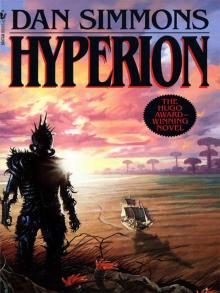 Hyperion
Hyperion The Crook Factory
The Crook Factory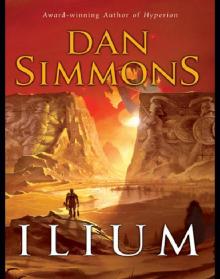 Ilium
Ilium Phases of Gravity
Phases of Gravity Hardcase
Hardcase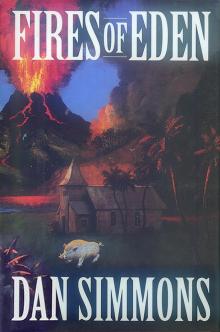 Fires of Eden
Fires of Eden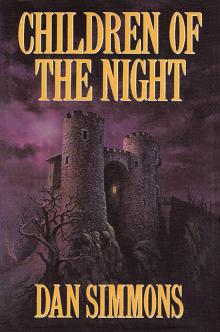 Children of the Night
Children of the Night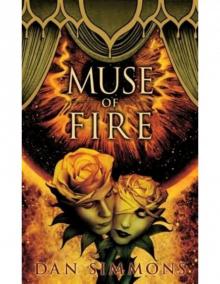 Muse of Fire
Muse of Fire Drood
Drood The Fifth Heart
The Fifth Heart Carrion Comfort
Carrion Comfort The Hollow Man
The Hollow Man Summer of Night
Summer of Night The Fall of Hyperion
The Fall of Hyperion Black Hills
Black Hills A Winter Haunting
A Winter Haunting Hard Freeze
Hard Freeze Prayers to Broken Stones
Prayers to Broken Stones Hard as Nails
Hard as Nails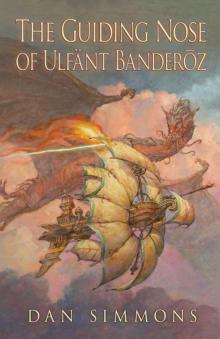 The Guiding Nose of Ulfant Banderoz
The Guiding Nose of Ulfant Banderoz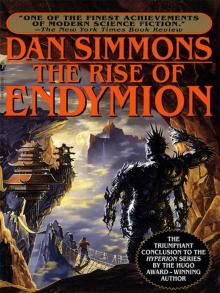 The Rise of Endymion
The Rise of Endymion Orphans of the Helix
Orphans of the Helix Lovedeath
Lovedeath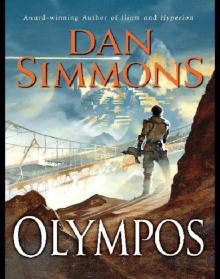 Olympos
Olympos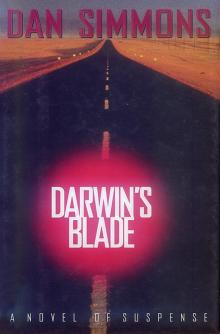 Darwin's Blade
Darwin's Blade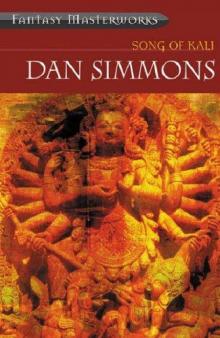 Song of Kali
Song of Kali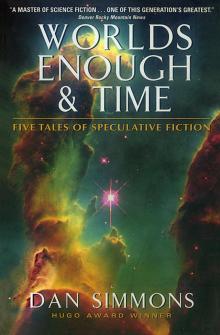 Worlds Enough & Time: Five Tales of Speculative Fiction
Worlds Enough & Time: Five Tales of Speculative Fiction The Abominable
The Abominable The Death of the Centaur
The Death of the Centaur Hard as Nails jk-3
Hard as Nails jk-3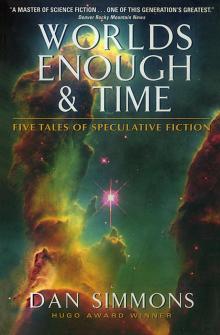 Worlds Enough & Time
Worlds Enough & Time Joe Kurtz Omnibus
Joe Kurtz Omnibus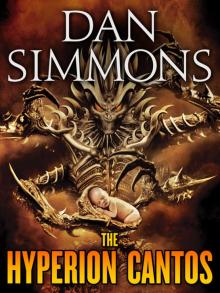 The Hyperion Cantos 4-Book Bundle
The Hyperion Cantos 4-Book Bundle Rise of Endymion
Rise of Endymion Hard Freeze jk-2
Hard Freeze jk-2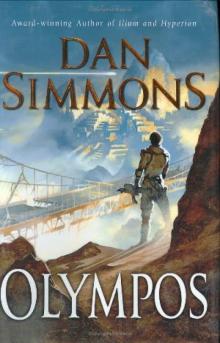 Olympos t-2
Olympos t-2 The Abominable: A Novel
The Abominable: A Novel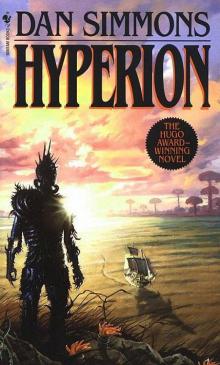 Hyperion h-1
Hyperion h-1 Remembering Siri
Remembering Siri Black Hills: A Novel
Black Hills: A Novel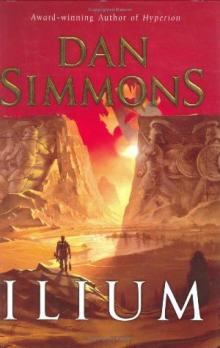 Ilium t-1
Ilium t-1 Hardcase jk-1
Hardcase jk-1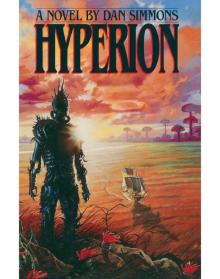 Hyperion 01 - Hyperion
Hyperion 01 - Hyperion